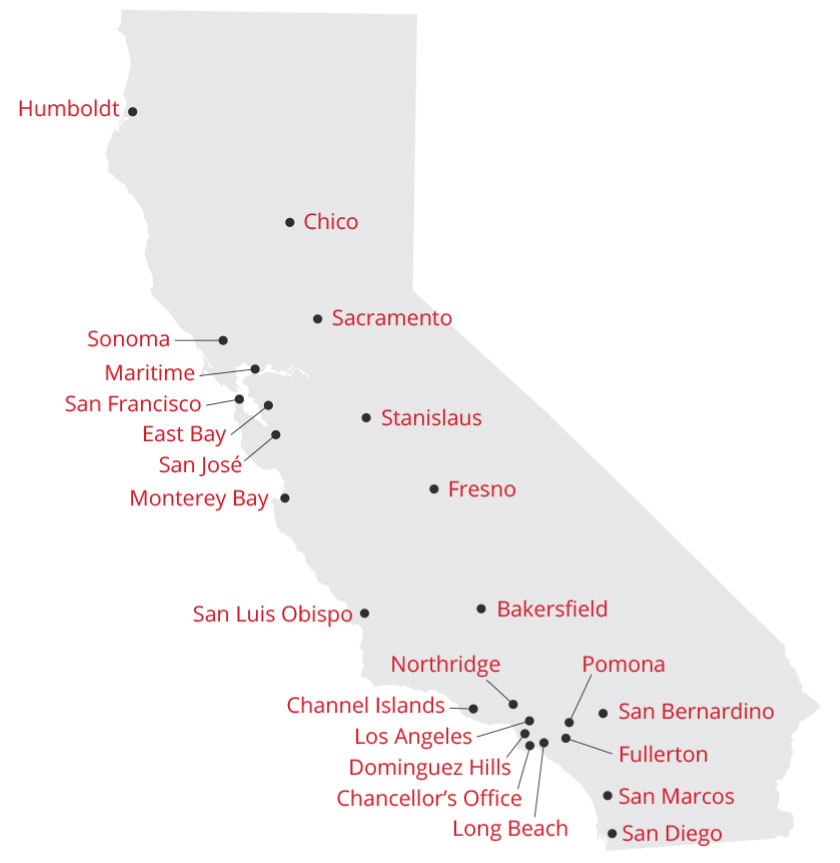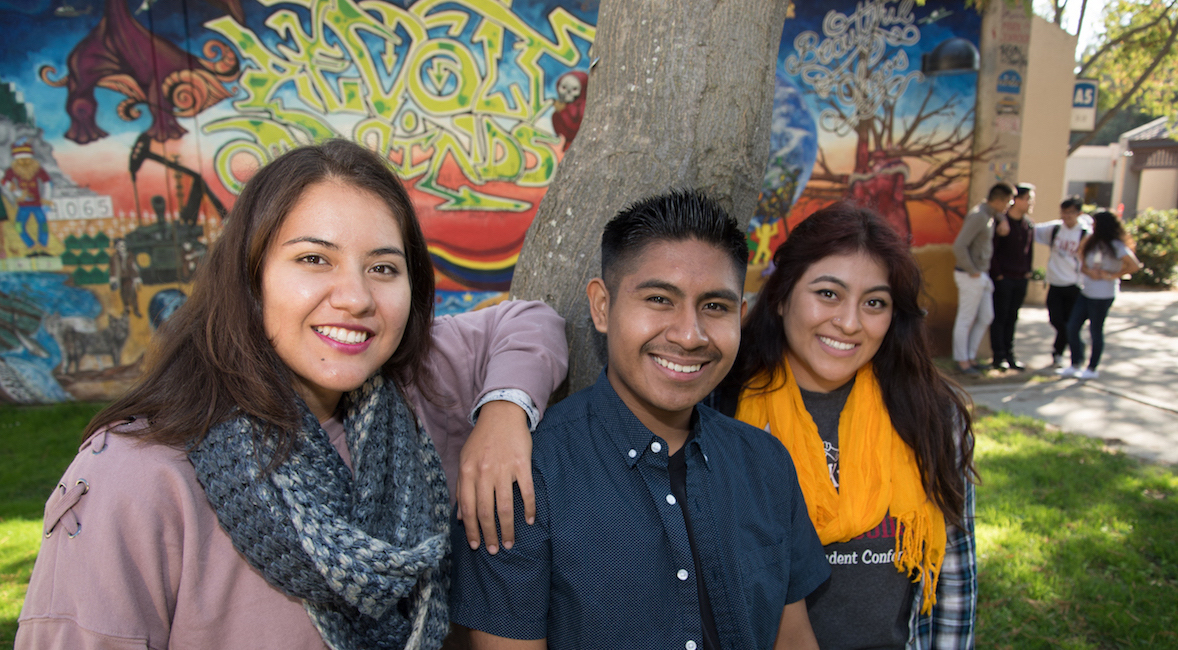California State University (CSU)
 The CSU system is the largest and among the most ethnically and racially diverse public
university systems in the U.S.
The CSU system is the largest and among the most ethnically and racially diverse public
university systems in the U.S.
Through its 23 campuses, the CSU offers more than 4,100 undergraduate and graduate degrees through both classroom and online instruction. Nearly 94 percent of the CSU's transfer students come from a California community college.
Students planning to transfer to the CSU should become familiar with the requirements for transfer admission, general education and major preparation. It's also important to determine which CSU campuses and majors may be considered "impacted," since additional admission and screening criteria may apply.
Click on each campus name to learn more about its transfer admission requirements.
- Bakersfield (S)
- Channel Islands (S)
- Chico (S)
- Dominguez Hills (S)
- East Bay (S)
- Fresno (S)
- Fullerton (S)
- Humboldt (S)
- Long Beach (S)
- Los Angeles (S)
- Maritime (S)
- Monterey Bay (S)
- Northridge (S)
- Pomona (S)
- Sacramento (S)
- San Bernardino (Q-1)
- San Diego (S)
- San Francisco (S)
- San Jose (S)
- San Luis Obispo (Q-2)
- San Marcos (S)
- Sonoma (S)
- Stanislaus (S)
Notes
- S = campus follows the semester system
- Q-1 = campus follows the quarter system, but will convert to semester system in fall 2020
- Q-2 = campus follows the quarter system; timeline for converting is undetermined
Remember!
While the information posted on this website is intended to be accurate, other institutions may change their requirements without notice. You should consult and check back periodically with a counselor or academic adviser, both at De Anza and at your transfer school, to confirm that your educational plan meets transfer requirements.

